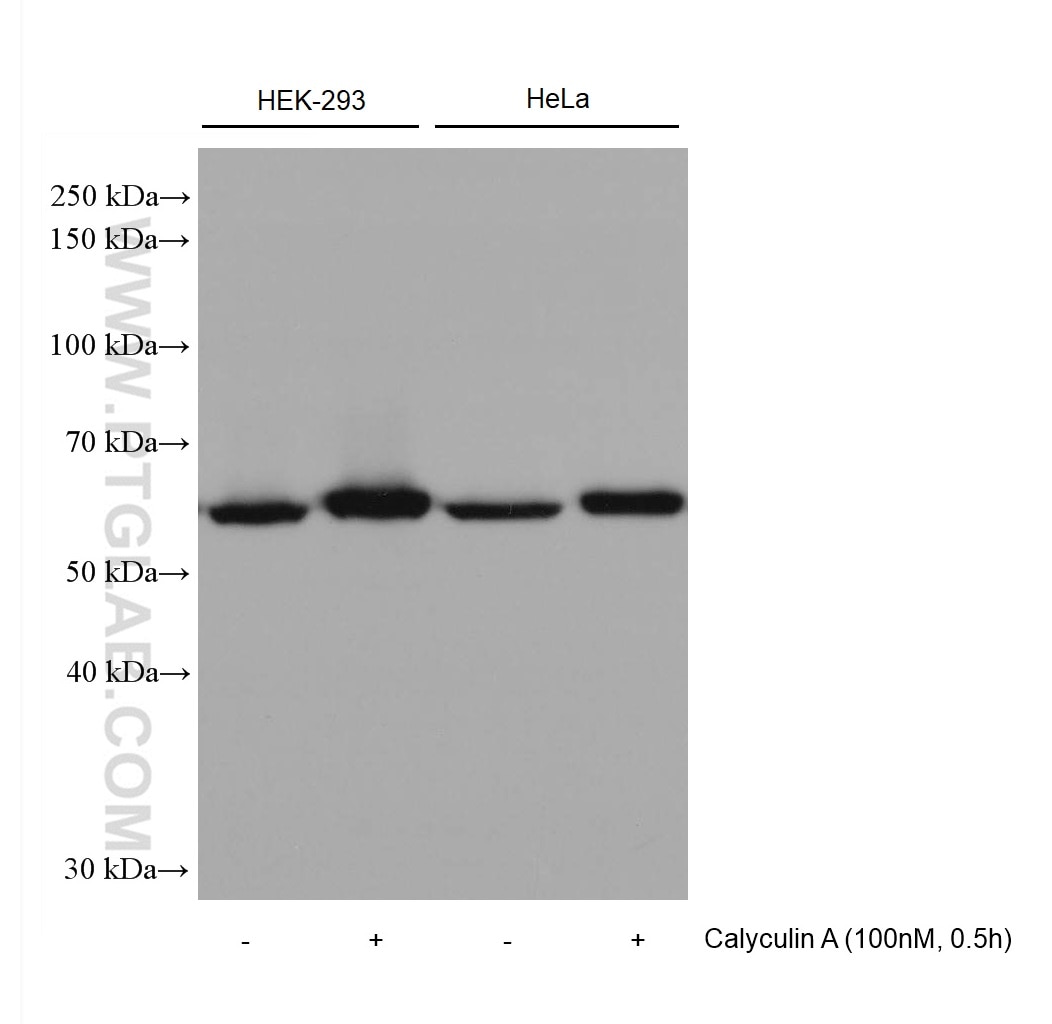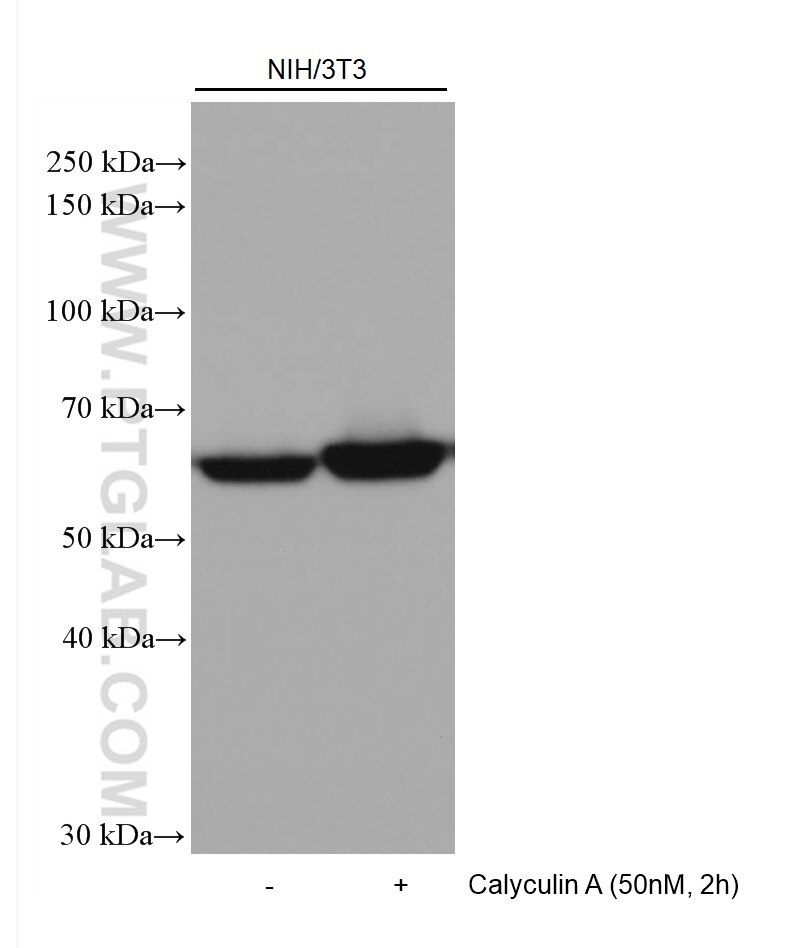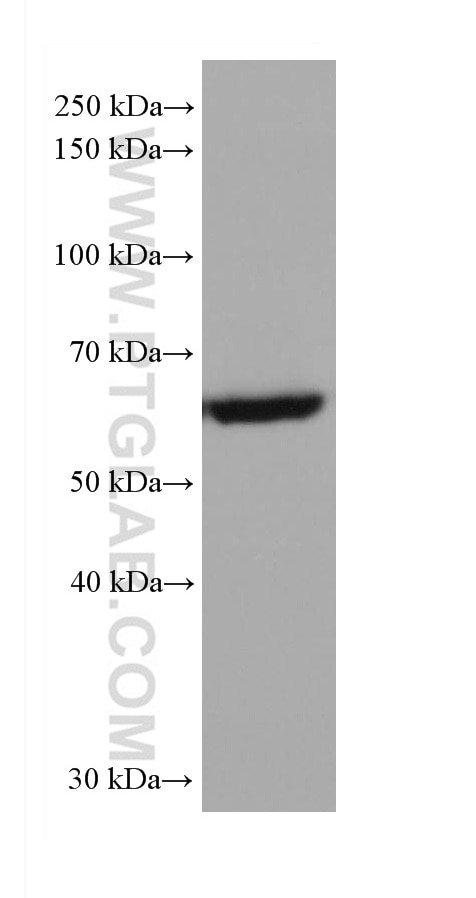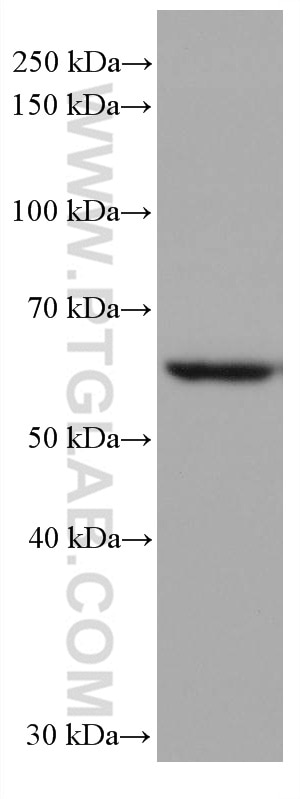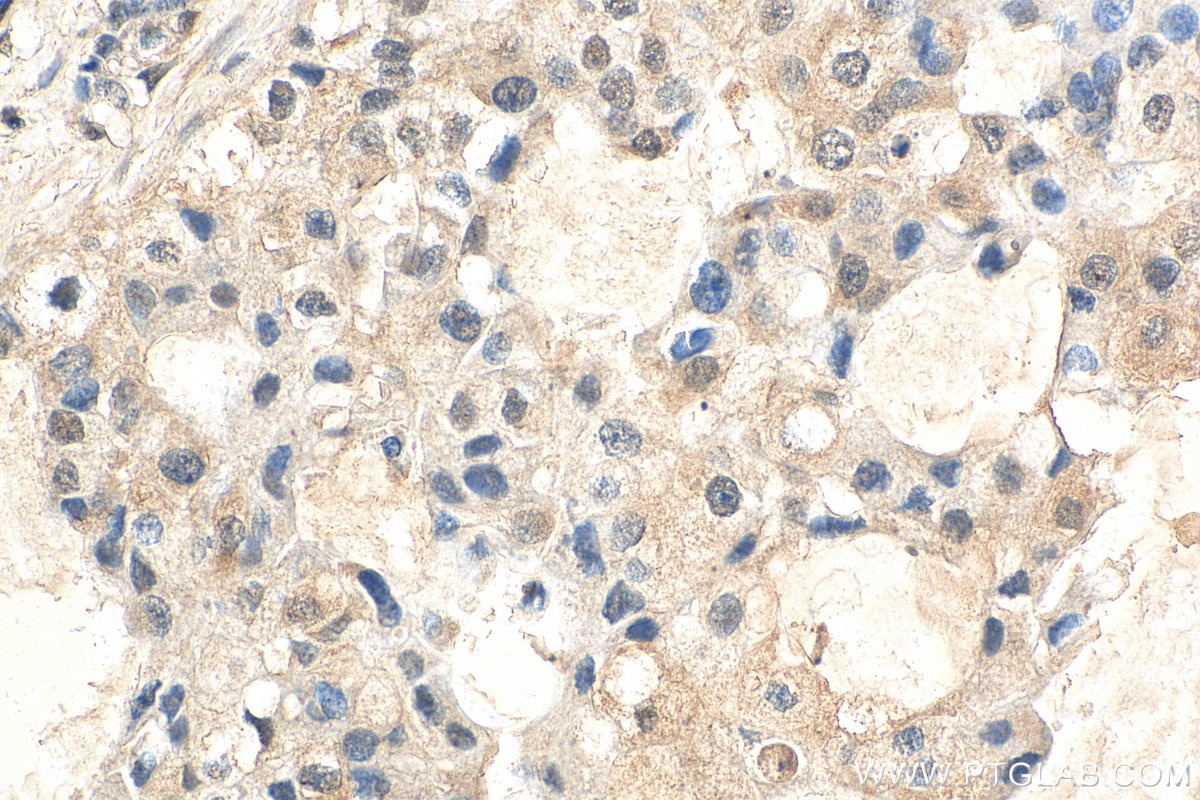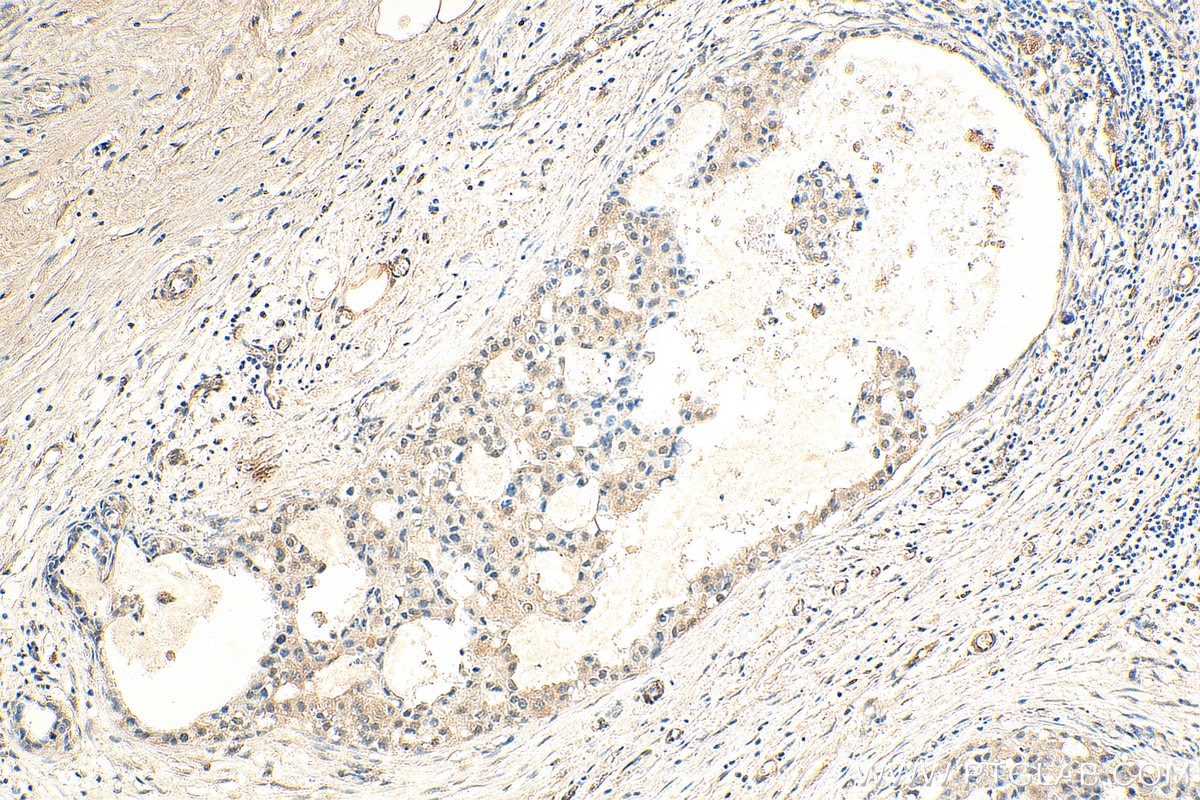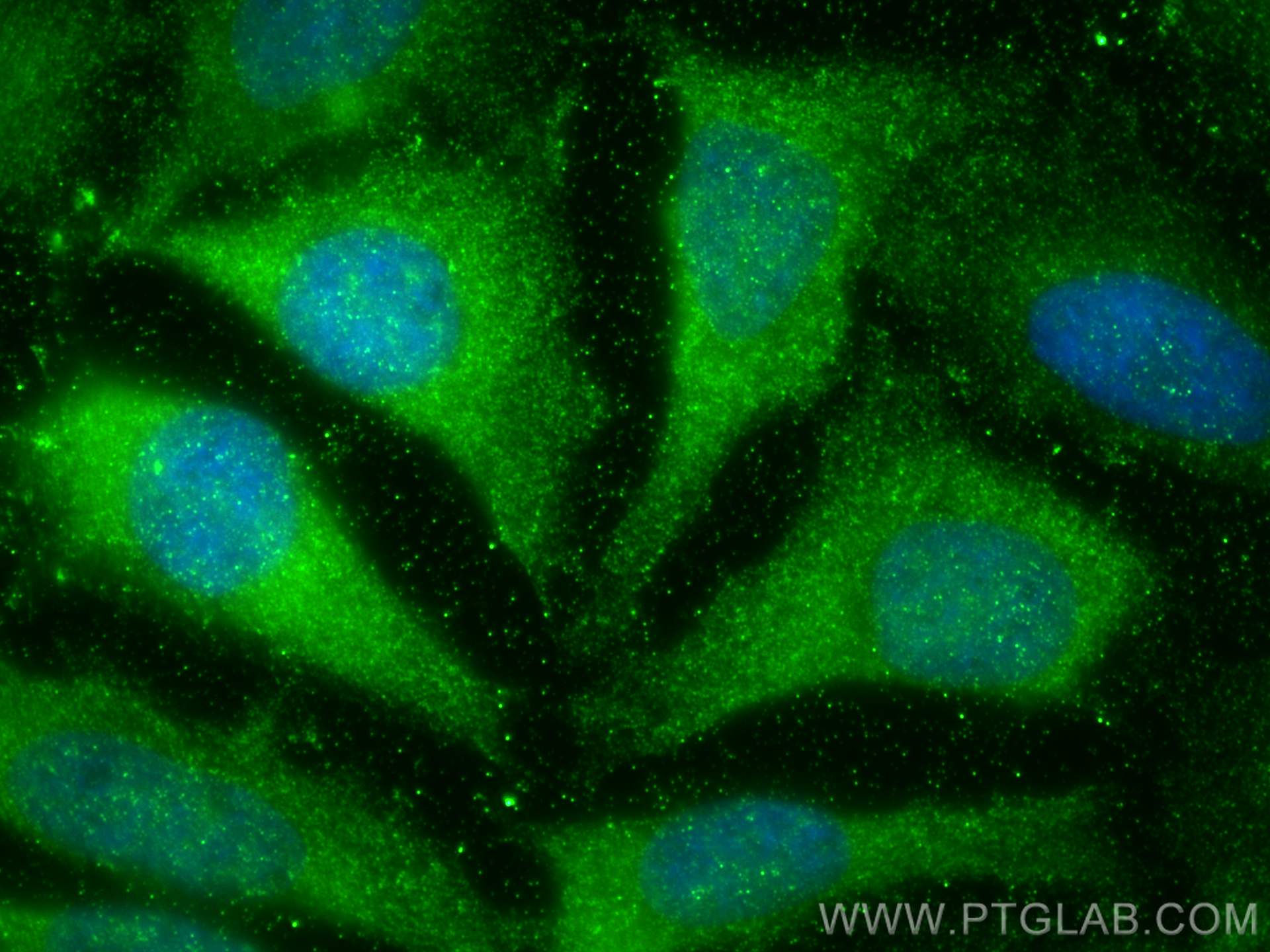Tested Applications
| Positive WB detected in | HEK-293 cells, HEK-293T cells, NIH/3T3 cells, Calyculin A treated HepG2 cells, Calyculin A treated HEK-293 cells, HeLa cells, Calyculin A treated HeLa cells, Calyculin A treated NIH/3T3 cells |
| Positive IHC detected in | human breast cancer tissue Note: suggested antigen retrieval with TE buffer pH 9.0; (*) Alternatively, antigen retrieval may be performed with citrate buffer pH 6.0 |
| Positive IF/ICC detected in | HeLa cells |
Recommended dilution
| Application | Dilution |
|---|---|
| Western Blot (WB) | WB : 1:5000-1:50000 |
| Immunohistochemistry (IHC) | IHC : 1:50-1:500 |
| Immunofluorescence (IF)/ICC | IF/ICC : 1:200-1:800 |
| It is recommended that this reagent should be titrated in each testing system to obtain optimal results. | |
| Sample-dependent, Check data in validation data gallery. | |
Published Applications
| WB | See 9 publications below |
Product Information
80457-1-RR targets AKT1-Specific in WB, IHC, IF/ICC, ELISA applications and shows reactivity with human, mouse samples.
| Tested Reactivity | human, mouse |
| Cited Reactivity | human, mouse |
| Host / Isotype | Rabbit / IgG |
| Class | Recombinant |
| Type | Antibody |
| Immunogen |
Peptide Predict reactive species |
| Full Name | v-akt murine thymoma viral oncogene homolog 1 |
| Observed Molecular Weight | 56-62 kDa |
| GenBank Accession Number | NM_005163 |
| Gene Symbol | AKT1 |
| Gene ID (NCBI) | 207 |
| RRID | AB_2918893 |
| Conjugate | Unconjugated |
| Form | Liquid |
| Purification Method | Protein A purification |
| UNIPROT ID | P31749 |
| Storage Buffer | PBS with 0.02% sodium azide and 50% glycerol, pH 7.3. |
| Storage Conditions | Store at -20°C. Stable for one year after shipment. Aliquoting is unnecessary for -20oC storage. 20ul sizes contain 0.1% BSA. |
Background Information
AKT is a serine/threonine kinase and it participates in the key role of the PI3K signaling pathway. Phosphatidylinositol-3 kinase (PI3K) is the key regulator of AKT activation. The recruitment of inactive AKT protein to PIP3-rich areas of the plasma membrane results in a conformational change that exposes the activation loop of AKT. AKT's activating kinase, phosphoinositide-dependent protein kinase (PDK1) , is also recruited to PIP3 microdomains. PDK1 phosphorylates AKT on threonine 308 (Thr308) of the exposed activation loop, activating AKT and leading to a second phosphorylation of AKT at serine 473 (Ser473) by a kinase presumed to be mTORC2 that further potentiates kinase activity. Active AKT will phosphorylate various downstream protein targets that control cell growth and translational control and act to suppress apoptosis. (PMID: 31594388, PMID: 30808672). 80457-1-RR specifically recognizes AKT1.
Protocols
| Product Specific Protocols | |
|---|---|
| IF protocol for AKT1-Specific antibody 80457-1-RR | Download protocol |
| IHC protocol for AKT1-Specific antibody 80457-1-RR | Download protocol |
| WB protocol for AKT1-Specific antibody 80457-1-RR | Download protocol |
| Standard Protocols | |
|---|---|
| Click here to view our Standard Protocols |
Publications
| Species | Application | Title |
|---|---|---|
Phytomedicine Apigenin ameliorates inflamed ulcerative colitis by regulating mast cell degranulation via the PAMP-MRGPRX2 feedback loop | ||
Phytomedicine Schisandrin B regulates mitochondrial dynamics via AKT1 activation and mitochondrial targeting to ameliorate renal ischemia-reperfusion injury | ||
Phytother Res Quercetin Alleviates Chronic Urticaria by Negatively Regulating IgE-Mediated Mast Cell Activation Through CD300f | ||
Nat Commun Multi-protomics analysis identified host cellular pathways perturbed by tick-borne encephalitis virus infection | ||
Chin Med Machine learning-assisted analysis of serum metabolomics and network pharmacology reveals the effective compound from herbal formula against alcoholic liver injury | ||
Bioorg Chem Isomeric 2-isobutylmalate derivatives with anti-pulmonary fibrosis effects from the leaves of Bletilla striata via LC-MS/MS-based molecular networking |

